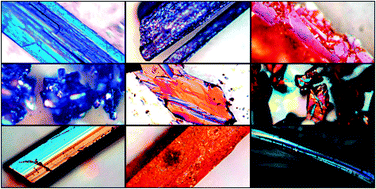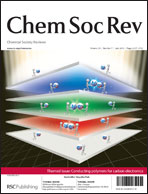Organic crystals: properties, devices, functionalization and bridges to bio-molecules†
Abstract
The purpose of this critical review is twofold: first, to review organic “small molecule” crystalline materials in terms of structure and function; and second, to consider if and how such materials might eventually enter the realm of device applicability. This area, one of the most interdisciplinary fields of research in contemporary materials science, embraces chemistry, physics, engineering, biology, theory and computation. The review therefore attempts to treat a relatively large number of examples including fundamental physical and electronic structure, single component and charge transfer complexes, physical properties of single crystalline materials, thin film and single crystal electronic and photonic devices, functional materials, and bio-inspired structures. The point of view is that of an experimental physicist, and in this context, challenges and possible routes to further advances in the development and utilization of organic small molecule materials are discussed for both fundamental and applied purposes (153 references).

- This article is part of the themed collection: Conducting polymers for carbon electronics

 Please wait while we load your content...
Please wait while we load your content...